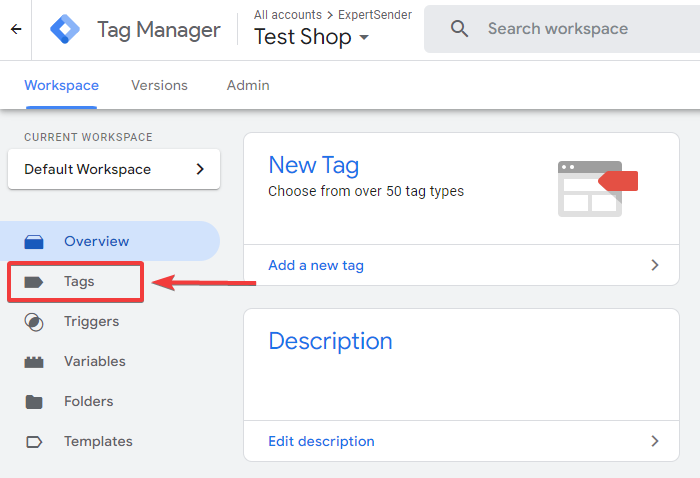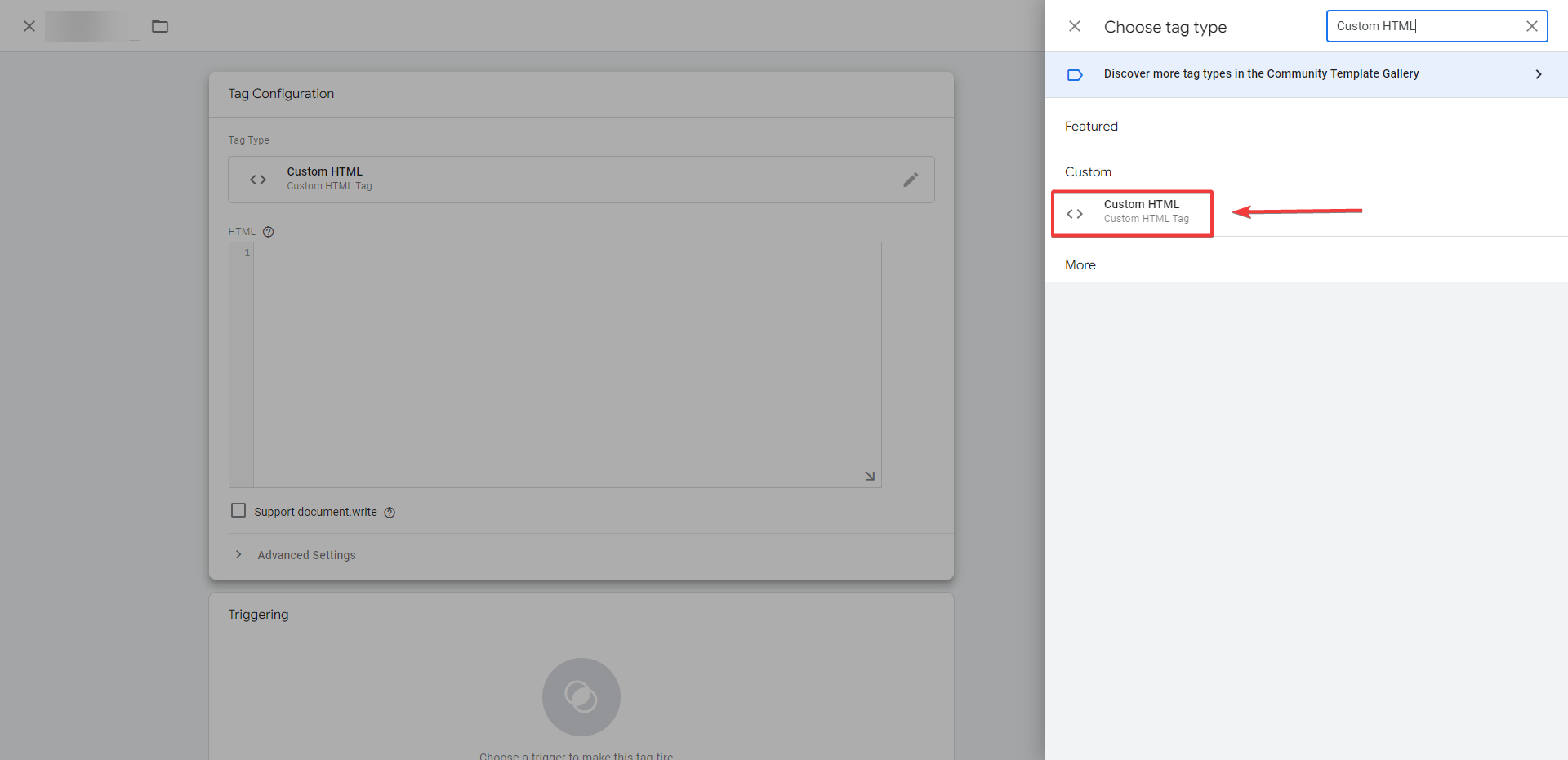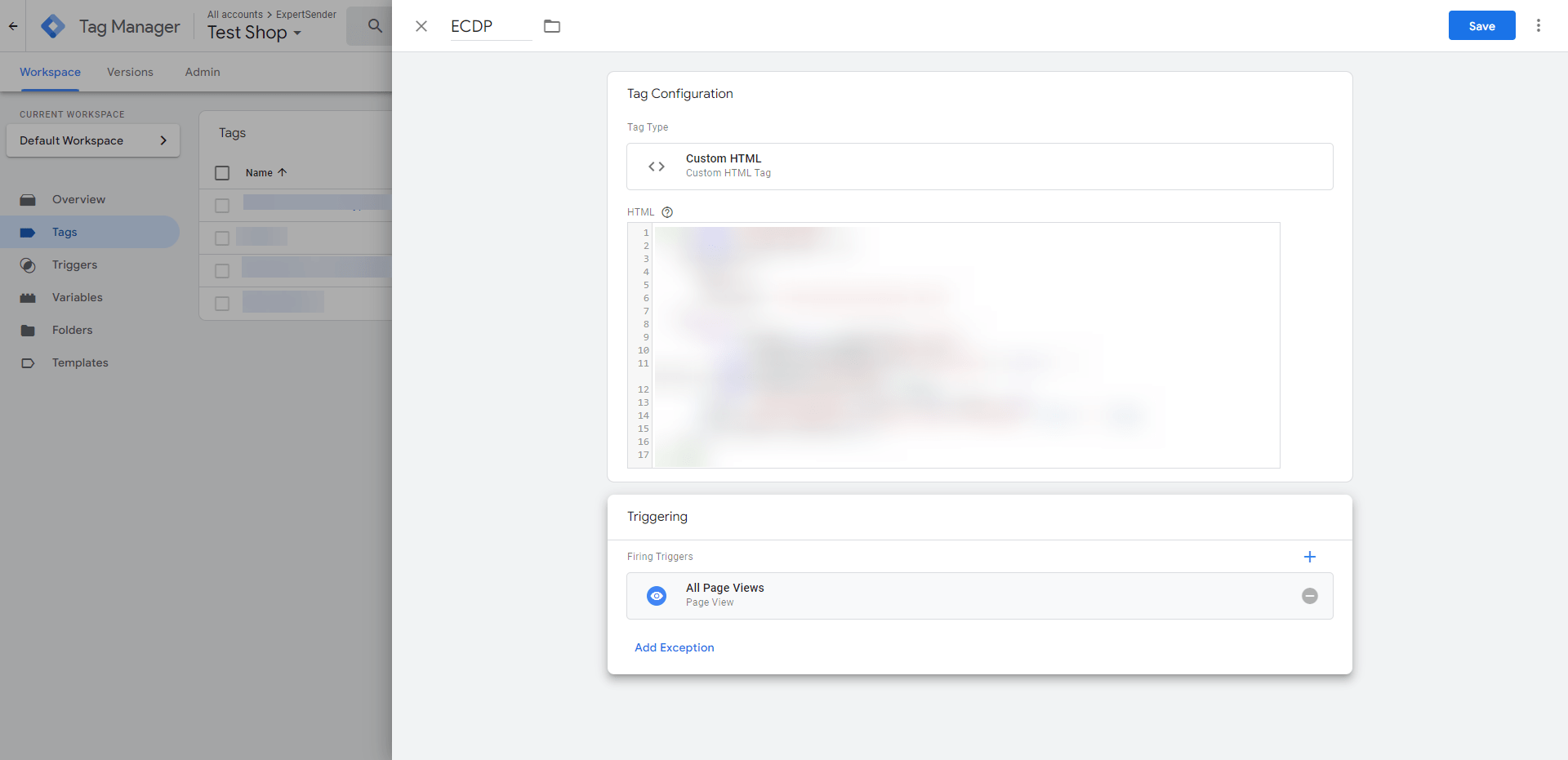Integrating your online store with ExpertSender CDP
From this article, you will learn how to integrate your online store with the ExpertSender platform. This process involves tracking traffic in your store and feeding the platform with customer and order data – both historical and current.
What does this process look like?
- Start tracking customer traffic in your store by adding our tracking code.
- Add the necessary customer information (attributes and consents) to the platform.
- Import your existing customer data.
- Automate adding new customers on an ongoing basis to the platform using:
- API.
- Forms created in ExpertSender CDP.
- Scraping forms on your website.
- Import historical order data.
- Automate adding order data to the platform via:
- API.
- Tracking script.
Follow our step-by-step instruction to ensure maximum effectiveness of your marketing activities from the very beginning of using ExpertSender CDP.
Tracking website traffic
Monitoring traffic on your website allows you to constantly transfer customer data to our platform. To achieve this, it is necessary to add our tracking code to your website code.
Installing the tracking code on your store’s website
Installing our tracking code is simple. You can do it yourself or ask your IT department for help.
If you want to install the tracking code yourself, we suggest using Google Tag Manager:
- Log into your ExpertSender account.
- In the panel on your left-hand side, go to the Settings > Web Tracking.

- In the last column, find and click the Tracking Code icon.
- Copy the code or download it as a text file.

- Log into Google Tag Manager.
- Navigate to the container that is connected to the page where you want to place the code.

- Go to the Tags tab.

- Click New to create a new tag.

- Give the tag a name, e.g., ‘ExpertSender tracking code’ and click the Tag Configuration section.
- Select Custom HTML.

- In the HTML section, paste the tracking code you copied from our platform.

- Save your changes.
- In the Rules tab, set when the ExpertSender code will run on your website.
- Select the Page Views rule and then select All Pages. This setting will cause the code to be called on every subpage.

- This is how the properly configured tag looks like:

- Save your changes.
- Test that the code has been added correctly – click Preview in the top right corner of the screen.
- Go to your website and perform some action, e.g., add a product to your cart.
- Return to the preview window and verify that the tag you created has been called.
- Close the preview window and click Publish.
If you don’t use Google Tag Manager, you can add tracking code in two other ways:
Necessary customer information
Check what information about your customers you have to include in ExpertSender CDP to be able to use it freely.
Customer attributes – system and non-standard
To store customer data in the platform, we use system attributes that have been listed here: Customer system attributes.
Not all the listed attributes are mandatory for import. We only require those by which we will be able to identify the customer in the platform and your store. You can enter this data in the Settings > Customers section.
If you group and segment your customers by attributes other than the system ones, you can add them to the platform following this instruction: Adding custom attributes.
Marketing consents
Consent to personal data processing for marketing purposes is the basis for your contact with customers. Consents may vary and depend on the channel – e-mail, SMS, or web push. One customer can have any number of contact consents assigned to them in the platform. It is important that they give their consents consciously.
The process of adding consents to the platform is described in this article: Adding consents.
Billing terms for using ExpertSender CDP
Precise indication of what marketing consents each of your customers has is necessary for the proper use of the platform.
This is also the basis for billing – we take into account only those customers who have given at least one marketing consent. This is a key element that you need to take into account when processing data in the ECDP system.
How to submit customer information to ExpertSender CDP?
Importing existing customer data
We suggest you start integrating with the platform by importing customer data from a file that contains your current customer database.
This will feed the platform with data about your customers and allow you to use all features.
To learn more about the import process, read this article: Import and export of customer data.
Setup current customer records
After importing customer data, it is time to integrate the platform with your online store in such a way that all new customer registrations (e.g., for a newsletter, creating an account) are automatically sent to ExpertSender CDP.
We enable sending current records to the platform in 3 ways:
- API.
- Forms created in ExpertSender CDP.
- Scraping forms on your website.
We describe these methods in detail in this article: Automating customer data transfer from signup forms.
Following our instructions will ensure that your website integration with our platform is flawless, which means efficient management of customer data and greater effectiveness of your marketing activities.
Sending order information
Similarly to the customer database, our platform also allows you to build a database of orders placed in your online store. Then, based on it, you can create advanced product recommendations and engaging marketing campaigns.
Before you have enough current orders stored in our platform, we recommend that you:
- Add order and product attributes to the platform.
- Import order data already placed in your online store.
Order and product attributes
Before importing order data, enter your product and order attributes into the platform. This will improve data import, facilitate customer segmentation, personalization of communication and RFM analysis.
To store order data in the platform, we use system attributes, which we listed here: Order system attributes.
If you collect order data other than the system data, you can add it to the platform as described in the article: Creating custom order and product attributes.
Import of historical order data
It is best to import historical orders from a file. How many orders should you import? Preferably all orders from the last 1–2 years.
Since orders often consist of numerical values in different formats (amount, number of products), prepare the file according to the guidelines given here: How to prepare an order file for import?
Configuration of submitting current orders
After importing data, you need to configure the platform’s connection to your online store to send information about current orders.
We provide two methods for submitting orders to ExpertSender CDP:
Method 1 – API
Method description: Sending order data via API is the most precise integration method. It allows you to transfer data directly from the store, enabling the ExpertSender CDP platform to track order details and status changes, such as returns or cancellations.
Scenarios supported by API: It is worth implementing API queries that support the creation of a new order, cancellation of an order, as well as full or partial refund of an order.
Each of these scenarios require sending appropriate information to ExpertSender CDP. You can find more details on this topic here: Orders – API methods.
Method 2 – Tracking Script
Method description: An alternative method of adding current orders to the platform is to use a script that tracks traffic on your website. This script automatically sends orders to the platform.
Limitations of the method: Please note that this script collects information from the front-end of the website, which means it does not have access to the back-end of your online store and is not able to send information about returns or order cancellations. These are only supported via API.






